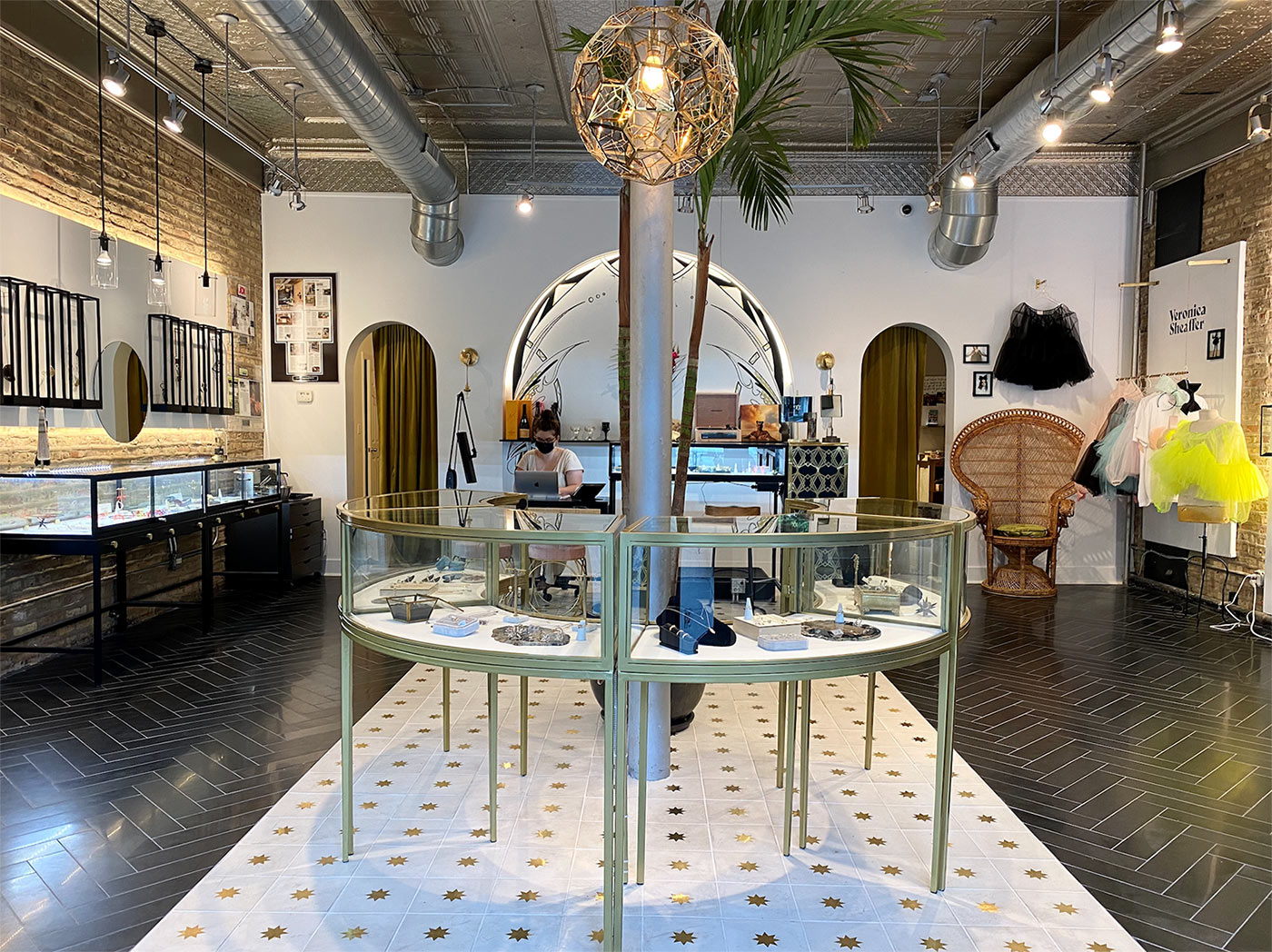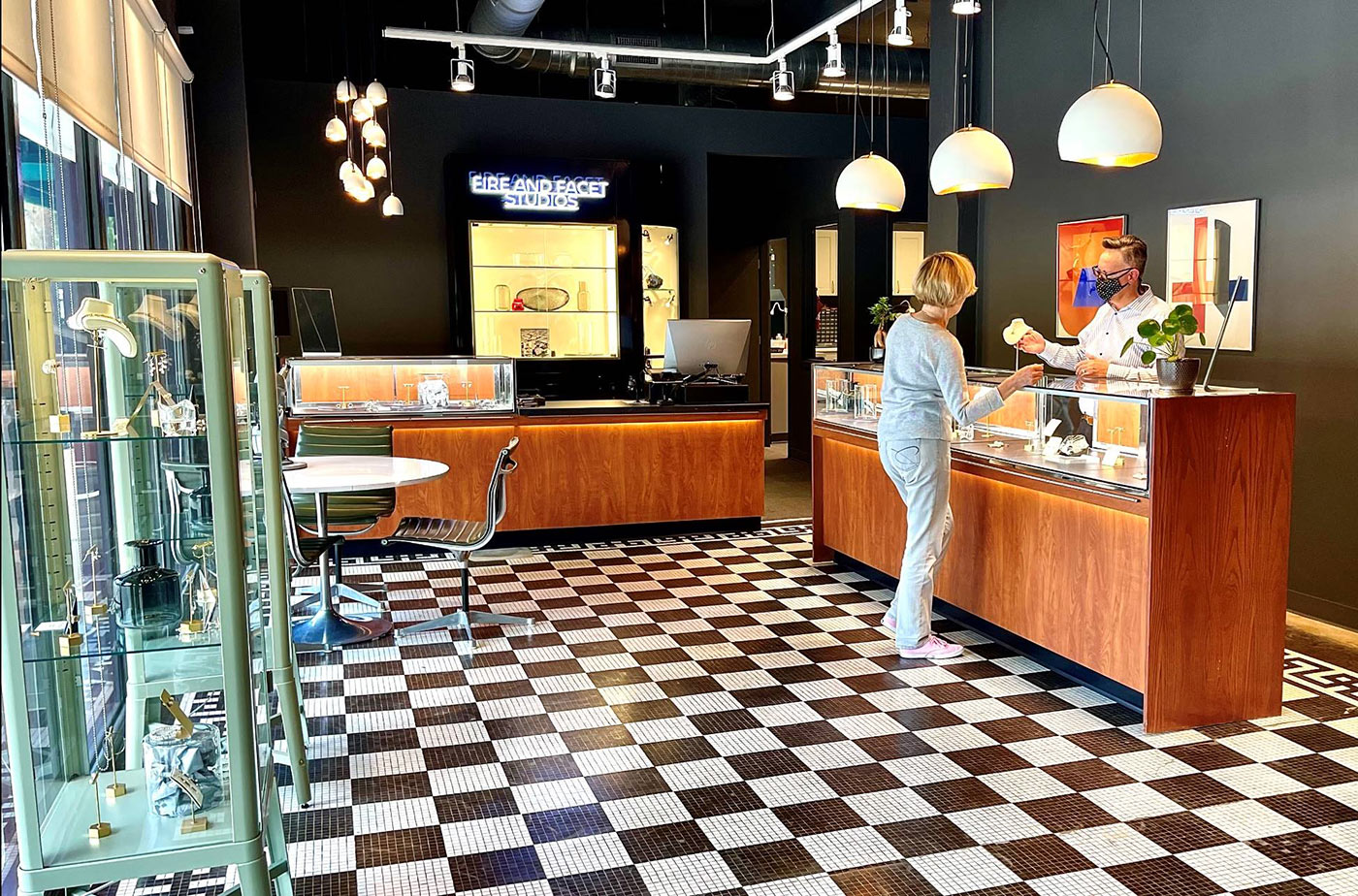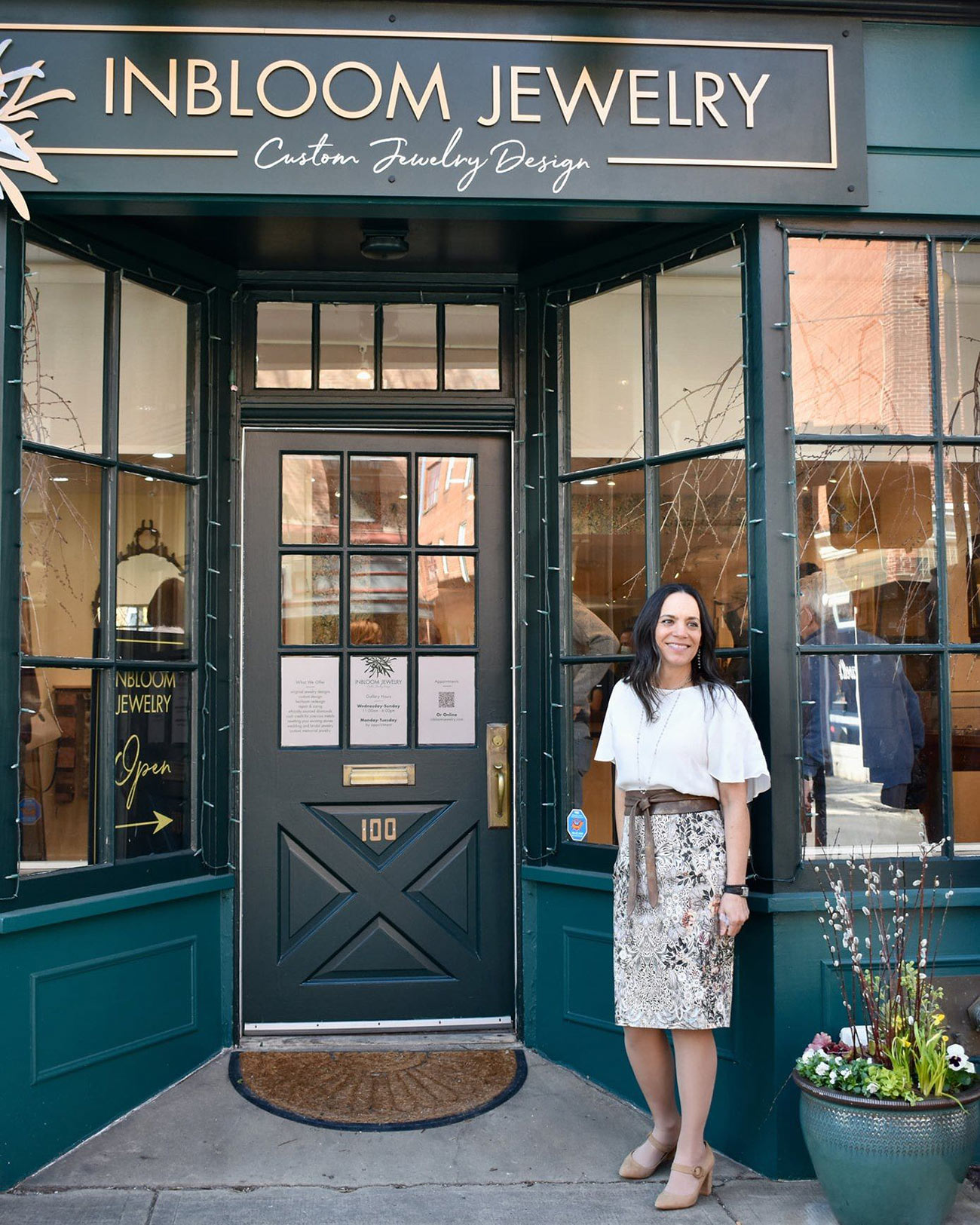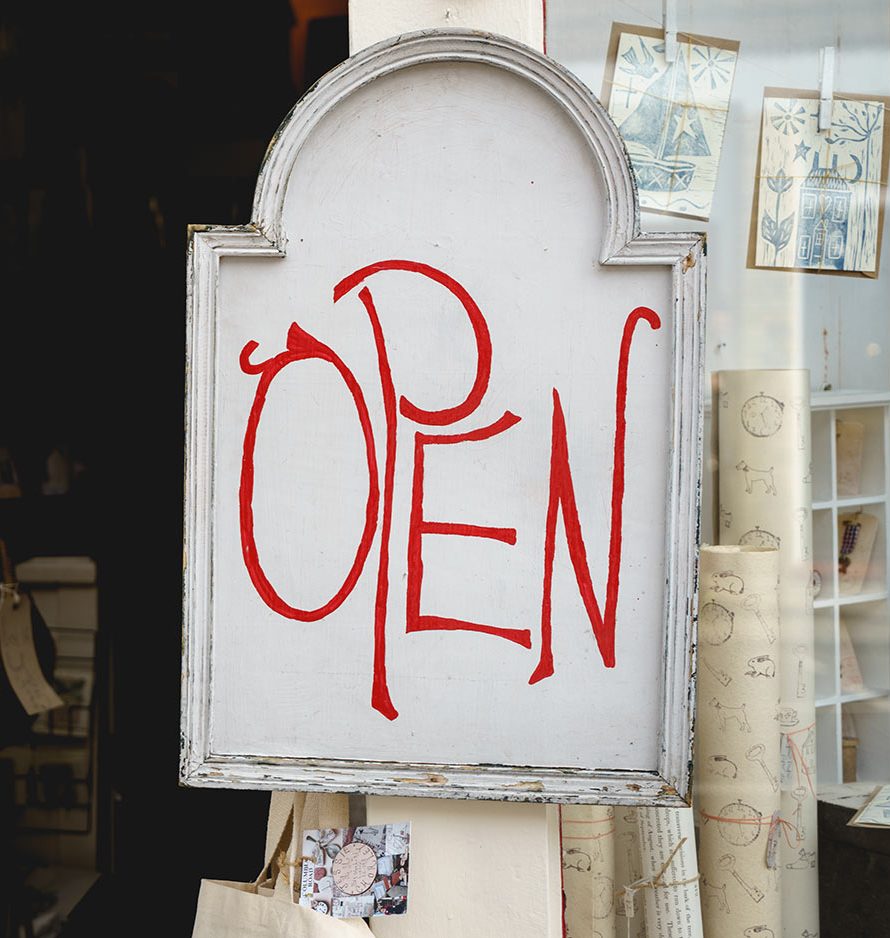How three jewelers opened new spaces when stores everywhere were closing—temporarily and permanently
Opening a jewelry store is tough enough. How about opening one in the middle of a global pandemic?
Despite the uncertainties and lingering economic concerns induced by COVID-19, the United States saw numerous jewelry retailers open new storefronts or expand their existing footprint over the past year. (In fact, in Q2 of 2021, the Jewelers Board of Trade reported 41 new business openings—36 of which were retailers.) JCK connects with three such retailers to discuss their motivations to enter deeper entrepreneurial waters, the opportunities they found, the challenges they faced, and the solutions they crafted.
 Adornment + Theory
Adornment + Theory
In June 2021, Viviana Langhoff opened the doors to her expanded Adornment + Theory storefront in Chicago’s Logan Square neighborhood, doubling the size of her 4-year-old jewelry boutique to 1,500 square feet.
Near, not far.
Langhoff had been exploring the purchase of a commercial space throughout much of 2020 but found limited available inventory within eyesight of her existing store, a requirement she held for any relocation. “If we moved any farther, it would almost be like starting over.”
Calculated and deliberate.
When Langhoff’s current landlord approached her in November 2020 about taking over an adjacent space, Langhoff expressed her interest. Still, the self-described “financial conservative” rejected any decision until the end of 2021’s first quarter. With the space still available as spring neared, Langhoff carefully evaluated the opportunity and consulted trusted advisers. “I was either going to jump or not, and I jumped,” she says. “I don’t find it productive to lead with fear.”
A costly effort.
Though Langhoff found a reputable contractor, the costs of products such as lumber coupled with labor and supply chain issues resulted in a build-out that set Langhoff back more than double what she’d projected. “There were bottlenecks everywhere and, my goodness, did the budget go up,” she says.
Creativity when closed.
Forced to shutter Adornment + Theory for two weeks, Langhoff rented an Airstream trailer, parked it in front of her Milwaukee Avenue storefront, and created a temporary shop. “We’re too small of a business to take weeks off without any revenue,” she explains. Remarkably, sales didn’t slow. Better yet, the Airstream sparked curiosity and delivered an Instagram-friendly visual that supercharged brand awareness for Adornment + Theory.
Keeping perspective.
During COVID-19’s already stressful times, Langhoff refused to let the expansion project stir any unnecessary pressure or negativity, particularly when dealing with customers, staff, and contractors. “When you treat people with humanity, it’s amazing how they come alive,” she says.
 Fire and Facet Studios
Fire and Facet Studios
After more than 25 years of working for other jewelry retailers, Peter Sutton opened Fire and Facet Studios in the St. Louis, Mo., suburb of Webster Groves on July 9.
The entrepreneurial leap.
Though Sutton had contemplated breaking out on his own before the arrival of the coronavirus, the pandemic accelerated those thoughts. “I wasn’t getting any younger, and I wanted to take what I was doing and tweak it,” he says.
A vision comes alive.
Sutton left his job at a local jeweler in April 2020. Four months later, he signed the lease for a space inside a century-old building in Webster Groves’ Old Orchard section. His eclectic design of the space included a neon sign and a tulip table flanked by leather Eames chairs. He also restored the onetime Chrysler dealership’s timeless black-and-white tile floor. “We wanted a space that had some definite uniqueness and energy,” he says.
A silver lining.
Sutton initially targeted a pre-Christmas opening, but construction and loan delays pushed Fire and Facet’s opening back seven months. Though a hit to his pocketbook, Sutton says the delays were serendipitous. “The extra time helped me solidify who we are, what we want to be, and how we’re going to conduct business,” he says. “As a result, we opened the doors with more confidence.”
Pivoting promotions.
After a soft opening in July, Sutton planned a September grand opening event. When it became apparent COVID-19 restrictions would make that difficult, he generated buzz elsewhere. Sutton contacted insurers to boost appraisal work, labored at the jeweler’s bench in the front window to demonstrate the studio’s repair and custom work, and focused on public relations, which included securing coverage in a well-read local newspaper that stirred immediate traffic. “We had to get creative in how we could get people to notice us,” he says. In lieu of the grand opening Fire and Facet never had, Sutton hopes to host a one-year anniversary celebration next summer.
 InBloom Jewelry
InBloom Jewelry
An accomplished studio artisan who made a name for herself at higher-end regional art fairs, Stacey Krantz introduced InBloom Jewelry into Frederick, Md.’s historical and independent-oriented downtown in April.
Planting roots.
After a decade-plus on the art fair scene, Krantz grew weary of the effort required and questioned the long-term stability of such events. When the pandemic halted art fairs, Krantz saw a clear exit ramp and began exploring a brick-and-mortar home for her business. Buoyed by a state grant and thorough calculations, Krantz felt confident she could gain more business in a commercial space while comfortably managing the added overhead. “Plus, I wanted to get planted in one spot and serve the community,” she says.
Finding a home.
Surveying real estate in downtown Frederick, one of Maryland’s largest cities, Krantz found some compelling opportunities. She quickly landed on a Patrick Street location, gaining favorable lease terms with an option to buy. “I definitely got to negotiate a bit and that was good for me,” she says. The build-out took three months.
Getting a jump-start.
Even before opening the doors to InBloom, Krantz accelerated marketing efforts to her existing customer database. She replaced her monthly newsletter with weekly communications and created a Love Stories campaign in which past clients shared the stories behind their favorite jewelry pieces. “This helped us hit the ground running when we did open in April,” she says. Krantz’s sales at the close of this summer, in fact, were three times greater than during the same period last year, when she worked without a commercial space.
Learning curves.
Admittedly, Krantz has had to learn how to manage a business that extends beyond herself. She’s had to hire—and dismiss—staff, align her four full-time employees with InBloom’s customer-centric mission, and strengthen, if not altogether redesign, certain operational procedures. “If something’s clogging us up, I haven’t been afraid to make decisions that get us moving forward,” she says. “Everything’s focused on building a healthy, long-term business.”
(Top photo: Getty Images Plus/Paolo Paradiso)
